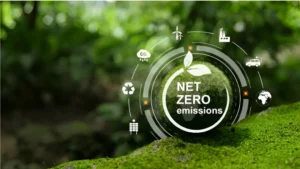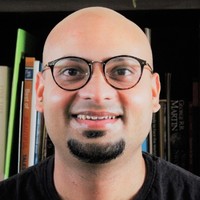
You have carefully determined the carbon footprint of your business, negotiating the intricacies of Scope 1, 2, and possibly even the difficult terrain of Scope 3 emissions. Well done! This is an important first step and a noteworthy accomplishment. What happens next, though? There is little that can be done to address climate change with a carbon footprint report sitting on a shelf collecting dust. This data’s real power is in its capacity to inform, direct, and energize your organization’s decarbonization process, turning data into action and opening the door to lofty objectives like Net Zero. This article explains how to use your carbon footprint data as the foundation of a strong and successful climate plan , from numbers to net zero how your carbon footprint-data fuels your decarbonization journey.
Step 1: Analyzing Your Carbon Footprint Results – Uncovering the Story
Your company’s operational and value chain impacts are described in your carbon footprint report, which is more than just a collection of numbers. Investigating this data in depth is the first step:
- Determine Hotspots for Emissions: Where are the main emission sources concentrated? Do they mostly reside in your purchased energy (Scope 2), your direct operations (Scope 1), or are they dispersed throughout your value chain (Scope 3)? Which categories—such as purchased goods, business travel, and use of sold products—are most important within Scope 3?
- Recognize patterns and trends: Examine trends if you have data from prior years. Is there a rise or fall in emissions? Where? What modifications to operations or outside variables could be causing these trends?
- Benchmark (If Possible): How does your footprint stack up against benchmarks or peers in the industry? This can set the scene and point out areas that need work .This analysis gives you the important information you need to properly prioritize your efforts.
This analysis provides the critical insights needed to prioritize your efforts effectively .
Step 2: Setting Meaningful Emission Reduction Targets
Establishing specific, challenging, and scientifically supported reduction goals comes next after you have a clear understanding of your emissions profile.
- SBTs, or science-based targets: Companies can use the Science Based Targets initiative (SBTi) to set GHG reduction goals that align with the degree of decarbonization needed to keep the increase in global temperature well below 2°C or 1.5°C over pre-industrial levels. Adopting SBTs shows a sincere dedication.
- Both immediate and long-term objectives: Set both short-term objectives (for the next five to ten years, for example) and long-term ones (for example, Net Zero by 2040 or 2050). Short-term objectives generate accountability and momentum.
- Match Business Strategy to Targets: Make sure your goals for reducing emissions are part of your overall business plan rather than being handled as a stand-alone project.
Step 3: Developing Your Decarbonization Roadmap – Charting the Course
After setting goals, you need a plan outlining how to reach them . This entails determining and ranking particular reduction projects. Key reduction levers frequently consist of:
- The “low-hanging fruit” is frequently energy efficiency. Enhancing energy efficiency in transportation, industry, and buildings can save money and drastically cut emissions mainly Scope 1 and Scope 2. Examine the choices described in materials such as Scope 2 Emissions Explained in Detail.
- Purchasing Renewable Energy: One important tool for cutting Scope 2 emissions is switching to renewable electricity. This may entail signing Power Purchase Agreements (PPAs), acquiring Renewable Energy Certificates (RECs), or generating energy on-site (e.g., solar panels).
- Fuel switching and process optimization (Scope 1): Industrial firms can significantly reduce Scope 1 emissions by re-engineering processes for increased efficiency or by moving from high-carbon fuels (such as coal or oil) to lower-carbon alternatives (such as natural gas, or ideally, green hydrogen or sustainable biofuels).
- Supply Chain Engagement (Scope 3): Scope 3 emissions represent the biggest portion of the pie for many. Promoting sustainable procurement methods, working together on low-carbon solutions, and interacting with suppliers to motivate them to lower their own emissions are all essential.
- Product and service innovation can address Scope 3 emissions associated with product use and end-of-life by redesigning products for reduced lifecycle emissions (e.g., enhanced energy efficiency during use, use of recycled materials, design for recyclability).
- Investing in Carbon Removals (for Net Zero): Once all practical reduction efforts have been completed, credible carbon removal projects will be required to achieve Net Zero for residual emissions that cannot be eliminated.
Step 4: Implementation and Monitoring – Staying on Track
Only when a roadmap is put into action will it be effective.
- Assign Responsibilities and Distribute Resources: Clearly state who is in charge of spearheading each project and make sure they have the funding and backing they require.
- Regularly Track Your Progress: Keep a close eye on your emissions and how you’re doing in relation to your goals. This enables you to determine what is and is not working and to adjust your course as necessary.
- Adjust and Change: New policies and technologies are continuously altering the decarbonization landscape. Be ready to change your plan of action.
Step 5: Communicating Progress and Driving Engagement – Sharing the Journey
Openness is essential.
- Internal Communication: Ensure that staff members are informed and involved. Their input and involvement are essential.
- Communication with External Stakeholders: Update investors, clients, and other stakeholders on your progress. This increases accountability and trust.
Conclusion
Your carbon footprint data guides your journey to decarbonization and Net Zero. Beyond compliance, it helps turn climate goals into real achievements through goal-setting, strategic planning, project execution, and transparent progress.
This process not only benefits the planet but also drives innovation, enhances brand reputation, and strengthens your company’s future resilience.










